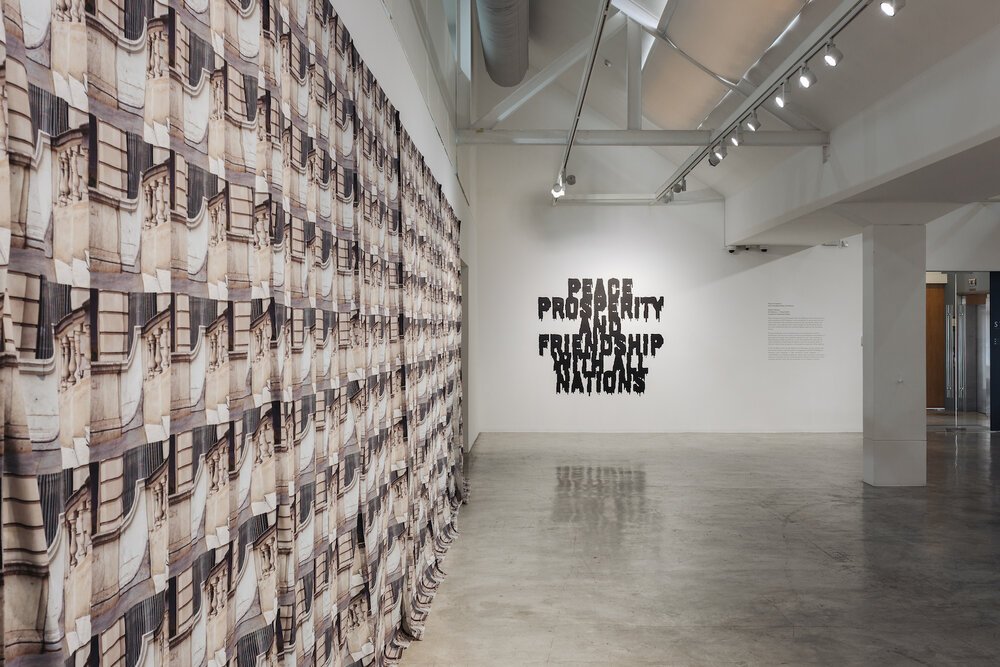A Review of 'Aaron Curry: Fragments from a Collective Unity' at STPI
The Los-Angeles-based artist teases with his playful sensibility
By Ian Tee
Aaron Curry, ‘We R 1–24’, 2018, screenprint on Dibond wrapped with STPI handmade mixed cotton and abaca paper, mounted on fine art printed Awagami bamboo paper on aluminium panel, dimensions variable. Image courtesy of STPI - Creative Workshop and Gallery.
STPI - Creative Workshop and Gallery has developed a reputation for its residency programme, where artists-in-residence collaborate with their in-house workshop to push the boundaries of printing and paper-making. The process builds STPI's workshop as a storehouse of experimentation and expertise, just as they challenge artists with new possibilities in an unfamiliar medium. Space for such risk-taking and skill development are necessary components in art-making which form the backbone of any arts eco-system. STPI's gallery activities and an annual fundraiser - with the most recent held just last month- provide the financial support to keep the programme running.
A testament to its growth is seen in STPI’s increasingly ability to host established international artists which gives audiences in Singapore access to works which would otherwise only be seen abroad. 'Aaron Curry: Fragments from a Collective Unity' is one such instance, and the Los-Angeles based artist's first solo exhibition in Southeast Asia as well.
The show begins right at the building façade where Curry's giant handwriting boldly marks the entrance leading to STPI. The rendition of these graffiti-esque marks in the form of vinyl wall stickers fuses gestures tied to the hand with digital manipulation of scale. This explosion of drawing into space is characteristic of Curry's practice which often sits on the boundary between two and three dimensions.
Aaron Curry, ‘Grid-Trip 2–5’, 2018, screen-print on Dibond wrapped with STPI handmade mixed cotton and abaca paper, dimensions variable. Image courtesy of STPI - Creative Workshop and Gallery.
Perhaps echoing its title, the exhibition layout is sparse with various "fragments" dispersed throughout the space. Works from the 'We R' and 'Grid-Trip' series are given their own wall treatments from which the individual objects protrude, a gray checkerboard reminiscent of Photoshop backgrounds and a sketchy drawn ultramarine grid respectively. This strategy plays on the idea of trompe l'oeil (French for "deceiving the eye"), a technique in art which involves creating an optical illusion of objects existing in three-dimensional space. However, in Curry's work the effect is reversed; instead tricking our eyes to thinking that we are looking at flat drawings. One could think of them in dialogue with Picasso's Cubist deconstructions, but pumped with pop imagery and hyper-saturated colours for twenty-first-century eyes accustomed to digital media
'Fragments' reflects a continuity in Curry's interests and visual language through his residency at STPI, taking inspiration from the "self-cannibalising" possibilities of printing and repetition of motifs. For fans familiar with his practice, the works on show offer but an appetiser to the scale and ambition of his paintings and sculptural installations. For me, Curry's sensibility is most generous and energetic in the adventurous catalogue published in conjunction with this exhibition. The publication appropriates the aesthetic of a children's playbook, complete with flaps that reveal installation images and even a card cut-out which allows one to make their very own Aaron Curry miniature sculpture.
Aaron Curry, ‘Cubik’, 2018, flocking on Dibond wrapped with STPI handmade mixed cotton and abaca paper, 90 x 63 x 20 cm. Image courtesy of STPI - Creative Workshop and Gallery.
It is worthy to mention that Curry is not only a bibliophile and avid album collector, but also runs a publishing company called Bad Dimension Press, where he collaborates with friends on zines, artist books and editioned multiples. This engagement with print, as both producer and consumer, seems to be a space not yet mined by residency artists at STPI. What Curry brought to it is his non-hierarchical approach to all forms of media and culture, which is evident in his various projects from book design to collaboration with fashion brand Rochambeau for their Spring-Summer 2018 collection.
What Curry and STPI share might be the same desire for their collaborations to push boundaries but also create new contexts for work to be seen. On that point, STPI's programme is as much to a platform to bring international artists into Singapore, as it is to increase the visibility of Singaporean artists. Notably, STPI is the only Southeast Asian gallery to show in all three Art Basel fairs, showing works by Jane Lee and Susann Victor alongside Do Ho Suh, Ryan Gander and Haegue Yang. Cynics might see this strategy of profile-raising as riding the wave of established blue-chip names in the global stage, but the reality of Southeast Asia being in the periphery cannot be ignored. Until this situation shifts, it seems that STPI has found a beautiful arrangement that allows partners to grow through working together.
















